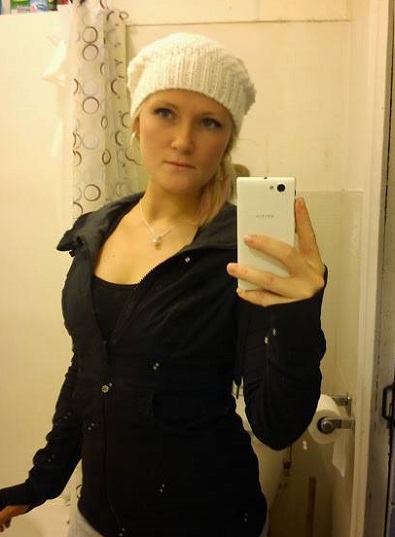Shauna Wolf. Photo courtesy Facebook.
The events of Shauna Wolf’s last day alive are coming clearer at the coroner’s inquest into her death as an inmate at Pine Grove Correctional Centre.
Wolf was 27 years old, and according to her family was possibly suffering from heroin withdrawals when she was found unresponsive in the centre’s segregation unit when on Dec. 27, 2015. The forensic pathologist has yet to testify at the inquest, which is meant to find ways to prevent similar in-custody deaths and to inform the public, but not to make findings of guilt related to the death.
Now, six jurors at the inquest have heard that Wolf died less than 12 hours after she was transferred from the medical unit to segregation.
Witness Jessica Fehr-Cummings, a correctional officer, said Wolf’s transfer came as a result of a disciplinary panel’s decision in relation to the use of contraband.
Fehr-Cummings said her interactions with Wolf during a “skin search,” cell transfer, supper tray drop-off, and while accompanying her to a shower were all kind and there was no lack of cooperation. Aside from Wolf saying she was weak, Fehr-Cummings said she did not call out for help due to illness nor did she complain of illness.
Another correctional officer, Lisa Nazar, was among those to find Wolf, drained of natural colour, in her cell later that night. Nazar was visibly shaken as she recounted the events, with her voice wavering and emotion showing on her face. Later on, she wiped her eyes with a Kleenex.
Both Nazar and her partner that night, Heidi Huziek, interacted with Wolf numerous times, whether to provide a snack drop-off around 8 p.m. and provide an envelope and piece of paper Wolf had requested, to respond to a question about when Wolf could get her night medication, to do cell checks that ensure all inmates are alive and breathing, and finally to offer a second blanket which Wolf had requested earlier that day.
Huziek said Wolf did not get up to respond when the nurse was handing out meds, but Huziek said that isn’t atypical behavior for an inmate. It wasn’t until around 10:20 p.m. when the COs went to offer Wolf a second blanket, which she had requested earlier, that Huziek had a “feeling like we needed to go in” to the cell.
When they went in, Huziek felt Wolf had a weak pulse and called for the nurse and paramedics.
Nazar said she waited outside Wolf’s cell as nurses and medical personnel entered the cell. Her role was to make sure inmates and staff were okay, she said, and when asked if the events were traumatic, Nazar said they were and she had sought help afterwards.

Shauna Wolf’s mother Colleen, father Bill Faulkner, and nine-year-old daughter Nicole outside Prince Albert Court of Queen’s Bench. Photo by Chelsea Laskowski.
Wolf’s mother Colleen sobbed audibly as the rescue efforts from inside Wolf’s cell all the way to the ambulance were described.
Nazar said after Wolf was taken to hospital, she returned to her cell and started cleaning it out.
“I don’t know why, my mind was just in autopilot,” she said.
Huziek also said she saw a counsellor after Wolf’s death.
Sgt. Adam Dunn is a Prince Albert Police Service officer who was involved into the investigation into Wolf’s death. He told the inquest he found no signs of a suicide or homicide when searching Wolf’s cell and after interviewing nurses, fellow inmates, and correctional officers.
He said Wolf’s time of death was 11:37 p.m. that night in Victoria Hospital.
Colleen, father Bill Faulkner, and nine-year-old daughter Nicole are present at the inquest and have a lawyer representing them at the inquest. Also, the Elizabeth Fry Society have standing to ask questions alongside the coroner’s counsel and the Ministry of Corrections’ counsel.
Thus far, supplementary questions have revolved around correctional officer training in recognizing overdoses or withdrawal, the transfer of inmate medical information to officers, and what condition Wolf was in throughout her final day.
Five days have been set aside for the inquest.
